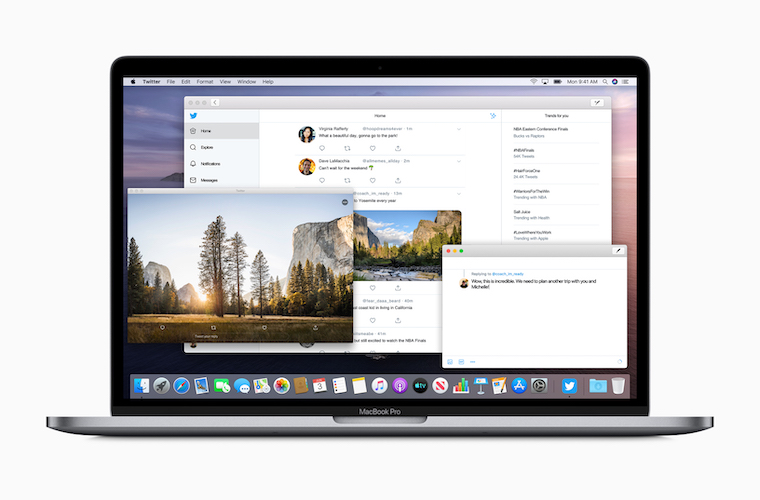During WWDC, Apple representatives let it be known that they definitely did not resent the development of applications growing up within the Catalyst project (originally Marzipan) for macOS Catalina. These are native iOS applications that were subsequently converted to work on macOS. The first previews of these ports were presented last year, with more to come this year. They should already be one step further, as Craig Federighi has now confirmed.
It could be interest you

In macOS High Sierra, several applications originally from iOS appeared, on which Apple tested the functioning of the Catalyst project in practice. These were News, Household, Actions and Recorder applications. In the upcoming macOS Catalina, these applications will see significant changes for the better, and more will be added to them.
The aforementioned Apple applications served Apple developers as a kind of learning tool for understanding how the combination of UIKit and AppKit will behave in practice. After a year of work, the whole technology is said to be much further along, and the applications resulting from the Catalyst project should be somewhere completely different than they were in their first version last year.
It could be interest you

The first versions of applications used UIKit and AppKit at the same time, for different, sometimes duplicated needs. Today, everything is much more straightforward and the entire development process, including tools, is much more streamlined, which will logically be reflected in the applications themselves. These should look much more like classic macOS applications than rather primitive iOS ports with limited functionality.
In the current test version of macOS Catalina, the aforementioned news are not yet available. However, Federighi says that the new version will definitely appear with the arrival of the first public beta tests at the latest, which should happen sometime during July.
There is a whole lot of evidence in Catalina that they're working on a full, Catalyst version of Messages, much like Shortcuts for Mac. So, just like Shortcuts, I decided to cut to the chase and do it myself by calling the system frameworks. Voilà pic.twitter.com/IsXKrGpemd
- Steve Troughton-Smith (@stroughtonsmith) June 19, 2019
Developers testing the currently available test versions of macOS Catalina claim that there are several clues inside the system that indicate what other applications could receive a conversion through the Catalyst project. It should be Messages and Shortcuts. In the case of messages, this would be a logical step, as the Messages iOS application is significantly more sophisticated than its macOS sister. A port from iOS would make it possible to use, for example, effects or the iMessage App Store on macOS, which are not available here in their current form. The same applies to the conversion for the Shortcuts app.
